Author: Juha Honkala
Esko-Juhani Tennilä: Jäämeri kutsuu. Koillisväylä, Murmansk ja Suomen mahdollisuudet [The call of the Arctic Sea. The Northeast Passage, Murmansk and Finland’s opportunities]
11 December 2014 | Mini reviews, Reviews
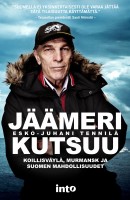 Jäämeri kutsuu. Koillisväylä, Murmansk ja Suomen mahdollisuudet
Jäämeri kutsuu. Koillisväylä, Murmansk ja Suomen mahdollisuudet
[The call of the Arctic Sea. The Northeast Passage, Murmansk and Finland’s opportunities]
Helsinki: Into Publishing, 2014. 332 pp., ill.
ISBN 978-952-264-197-7
€26, paperback
Esko-Juhani Tennilä is a Lapland-born editor, left-wing politician, former MP and author. The call of the Arctic Sea is a travel book and reportage book about Russia’s Murmansk and the neighbouring areas. Murmansk is a major port city whose harbour is ice-free in winter, and it is the largest city in the Arctic Circle. Nearby there are large ore, gas and oil resources. Global warming is beneficial to the region’s operating environment. Tennilä provides a fluent and well-backgrounded account of the experiences of entrepreneurs, politicians, decision-makers and ordinary people; he also meets Finns and Skolts, the Russian Sámi. Many foreign (e.g. Norwegian) companies are interested in the area. There is also activity by Finnish firms, but according to Tennilä not enough, and the Finnish State has not been able to actively take advantage of the economically important and interesting opportunities within the region along its northern border.
Translated by David McDuff
Mirkka Lappalainen: Pohjolan Leijona. Kustaa II Aadolf ja Suomi 1611–1632 [Lion of the North. Gustavus Adolphus and Finland, 1611–1632]
3 December 2014 | Mini reviews, Reviews
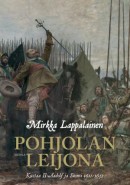 Pohjolan Leijona. Kustaa II Aadolf ja Suomi 1611–1632
Pohjolan Leijona. Kustaa II Aadolf ja Suomi 1611–1632
[Lion of the North. Gustavus Adolphus and Finland, 1611–1632]
Helsinki: Siltala, 2014. 321 pp., ill.
ISBN 978-952-234-242-3
€31.50, hardback
The book presents a diverse and vivid history of the reign of Gustavus Adolphus – possibly the most important ruler in Swedish history – his era and his impact on Finland. When he rose to the throne at the age of just 17 in 1611, Finland was a strategically important region because of the threat posed by Russia and Poland. Among other things the king organised a meeting of representatives of the estates in Finland, the Regional Parliament of 1616 – even though he felt distrust of the Finnish people, who had supported the Polish King Sigismund, who had sought the Swedish crown. When the threat from the East had been repelled, Finland remained as a marginal corner of the world, which mainly provided taxes and soldiers. In 1630 the King, as a Lutheran soldier of faith, took his troops to Germany to fight in the Thirty Years War, and fell in 1632. However, in the period described the Swedish state, with Finland as a part of it, became a centralised state led by the King and his Chancellor Axel Oxenstierna, a system of government that was one of the most efficient in Europe. Lappalainen received the Finlandia Prize for Non-Fiction 2014 for her book.
Translated by David McDuff
Erkki Tuomioja: Siinä syntyy vielä rumihia. Poliittiset päiväkirjat 1991–1994 [Heads will roll. Political diaries 1991–1994]
20 November 2014 | Mini reviews, Reviews
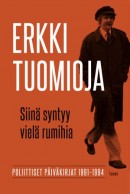 Siinä syntyy vielä rumihia. Poliittiset päiväkirjat 1991–1994
Siinä syntyy vielä rumihia. Poliittiset päiväkirjat 1991–1994
[Heads will roll. Political diaries 1991–1994]
Editor: Veli-Pekka Leppänen
Helsinki: Tammi, 2014. 680 pp., ill.
ISBN 978-951-31-7555-9
€39, hardback
Erkki Tuomioja (born 1945) has for a long time served as a member of parliament and as Finland’s foreign minister. A left-wing Social Democrat, Tuomioja has since his youth been known as a sharp-minded social debater as well as a writer and researcher. His publications include a biography of his grandmother, the Estonian-born eminent writer and dramatist Hella Wuolijoki. These fascinating political diaries from the early 1990s cover such topics as the break-up of the Soviet Union, Finland’s increasingly close integration with western Europe, and with the disputes about the Social Democrat leadership and the remarkable rise of Martti Ahtisaari, who came in from outside to become the party’s presidential candidate, and ultimately the country’s president. Tuomioja’s characterisations of Finnish politicians and political life are apt and plain-spoken, with particular criticism reserved, for example, for President Ahtisaari. Tuomioja does not conceal his own doubts and disappointments, and accepts that some of his views of the time do not correspond to those that he holds today. The editor provides the reader with a summary of the important events at the beginning of each month.
Translated by David McDuff
Panu Rajala: Tulisoihtu pimeään. Olavi Paavolaisen elämä [A torch into the darkness. The life of Olavi Paavolainen]
13 November 2014 | Mini reviews, Reviews
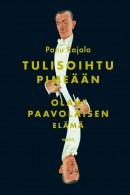 Tulisoihtu pimeään. Olavi Paavolaisen elämä
Tulisoihtu pimeään. Olavi Paavolaisen elämä
[A torch into the darkness. The life of Olavi Paavolainen]
Helsinki: WSOY, 2014. 624 pp., ill.
ISBN 978-951-040254-2
€32.90, hardback
In the 1920s Olavi Paavolainen (1903–1964) became the charismatic figurehead of the influential Tulenkantajat (‘Firebearers’) movement, which placed emphasis on internationalism and modernism. After the movement broke up Paavolainen worked as a prominent cultural leader and critic who knew how to provoke and to arouse admiration. The original travel book he wrote about Nazi Germany in peacetime is still read, as is his book Synkkä yksinpuhelu (‘A sombre monologue’, 1946), based on the diaries he kept during the Second World War. The criticism the book received (and doubts about its author’s ‘wisdom of hindsight’) contributed to Paavolainen’s silence as a writer. Although in the 1950s and 1960s as a director he brought about a flourishing of radio drama at the Finnish Broadcasting Company, he became an alcoholic. Much has been written about Paavolainen, but author and researcher Panu Rajala’s popular biography has managed to find new perspectives and gives a vivid portrayal of Paavolainen’s personality, the writers he knew, the colourful story of his complex relationships with women, and his travels. There is less analysis of his literary production, though the content and reception of his books are discussed.
Translated by David McDuff
Monikulttuurisen maamme kirja. Suomen kielen ja kulttuurin lukukirja [The book of our multicultural land. A reader of Finnish language and culture]
23 October 2014 | Mini reviews, Reviews
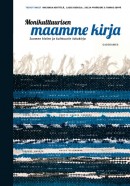 Monikulttuurisen maamme kirja. Suomen kielen ja kulttuurin lukukirja
Monikulttuurisen maamme kirja. Suomen kielen ja kulttuurin lukukirja
[The book of our multicultural land. A reader of Finnish language and culture]
Toim. [Ed. By] Marjukka Kenttälä, Lasse Koskela, Saija Pyhäniemi, Tuomas Seppä
Helsinki: Gaudeamus, 2013. 252 pp.
ISBN 978-952-495-253-8
€ 34, hardback
This book opens a fascinating, often entertaining and eminently readable perspective on Finnishness and Finnish culture. It contains short Finnish texts supplied with introductions, from the Kalevala and the writings of Finland’s national author Aleksis Kivi to the present day. There are also Finnish translations of the work of Finnish-Swedish authors. The older texts are drawn from the literary ‘canon’, in works by J.L. Runeberg, Z. Topelius, Juhani Aho, Maria Jotuni, Eino Leino, F.E. Sillanpää, Väinö Linna and Tove Jansson. Among the excerpts that date from more recent times there are even pop and rock lyrics. The writing often throws light on some aspect of Finnishness, sometimes with a critical or ironic note. There is also writing by immigrants. Interspersed with the literary examples are short essays giving the views of experts on subjects like Finnish history, language or sport. Some of the texts conclude with a glossary of unfamiliar words and terms. The explanations are arranged in order of their appearance in the text: for the casual reader seeking the meaning of a word, alphabetical order would have been more practical, though even then some phrases might have remained unnoticed.
Translated by David McDuff
Ove Enqvist & Heikki Tiilikainen: Linnakesaaret. Rannikkolinnakkeiden elämää sodassa ja rauhassa [The fortress islands. The life of the coastal bastions in war and peace]
2 October 2014 | Mini reviews, Reviews
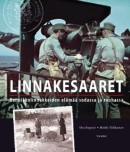 Linnakesaaret. Rannikkolinnakkeiden elämää sodassa ja rauhassa
Linnakesaaret. Rannikkolinnakkeiden elämää sodassa ja rauhassa
[Fortress islands. The life of coastal bastions in war and peace]
Helsinki: Tammi, 2014. 301 pp., ill.
ISBN 978-951-31-8005-8
€53.90, hardback
Finland’s coastal artillery was created after independence in 1918 to protect the country’s long coastline. Part of the system was, however, built in the early 20th century during the period of Russian rule for artillery batteries that were formed to provide security for St Petersburg. This carefully constructed and handsomely illustrated ‘coffee table book’, by two former bastion officers and non-fiction authors, charts the history of the coastal artillery until the decommissioning of the service: in 1998 its functions were transferred to other branches of the military. The main emphasis is on the early history, and nearly half of the book is devoted to a portrayal of the Second World War period. During the Winter and Continuation Wars the coastal artillery played a major role in Finland’s defence. Fierce artillery battles took place on the fortress islands, and there was also hand-to-hand fighting on them. The book presents a comprehensive account the development and operation of the bastions and the artillery in both wartime and peacetime. Light is shed on the diverse aspects of the working lives and recreations of soldiers and civilians in the harsh and demanding conditions of the outer islands.
Translated by David McDuff
Luvattu maa. Suur-Suomen unelma ja unohdus [The promised land. The dream of Greater Finland, and how it was forgotten]
26 September 2014 | Mini reviews, Reviews
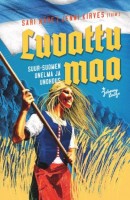 Luvattu maa. Suur-Suomen unelma ja unohdus
Luvattu maa. Suur-Suomen unelma ja unohdus
[The promised land. The dream of Greater Finland, and how it was forgotten]
Toim. [Ed. by] Sari Näre & Jenni Kirves
Helsinki: Johnny Kniga, 2014. 407 p.
ISBN 978-951-0-40295-5
€36.90, hardback
In the 1920s and 1930s Finland was powerfully influenced by the idea of a Greater Finland which was also to include the Finno-Ugric peoples living on the Soviet side of the border – at least East Karelia, if not more. Right-wing nationalists in particular nourished a vision that had its roots in the idealistic ‘Karelianism’ of the nineteenth century. When during the Second World War in 1941 Finland ended up fighting the Soviet Union as an ally of Nazi Germany, and the Finnish army advanced far beyond the eastern border, for a short time many Finns even viewed a Greater Finland as a possibility. After Finland suffered defeat in the war there was a desire to forget both the embarrassing alliance with Nazi Germany and the frenzied nationalistic dreams of Greater Finland with their population resettlements and other plans. Not until the 1970s did anyone begin to study the subject in more depth. Five historians from a younger generation present a fascinating study of the Greater Finland idea and the attempts at its realisation, discussing, for example, the attitude to the war taken by women and the clergy, life at the front line, and propaganda, including its expression in literature.
Translated by David McDuff
Minna Ruckenstein: Lapsuus ja talous [Childhood and the economy]
28 August 2014 | Mini reviews, Reviews
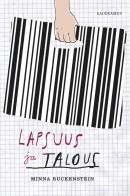 Lapsuus ja talous
Lapsuus ja talous
[Childhood and the economy]
Helsinki: Gaudeamus, 2013. 186 pp.
ISBN 978-952-495-294-1
€33, paperback
In her book the cultural anthropologist and researcher Minna Ruckenstein examines the Finnish and Western economy from an unusual angle, looking at it from the point of view ofchildren mainly under the age of 12. The preconceptions of educators about a deep divide between children and the market economy do not necessarily correspond to reality; the economic activities of children are diverse. They include, for example, reciprocity and exchange as a value creator that supports social relations. Children have a different relationship to money and its valorisation from that of adults. The difference between work and play is blurred, and children’s forms of paid work and their experience of it are also not as unambiguous as has been traditionally thought. During recent decades commercial children’s culture has become an increasingly obvious part of the child’s life; information technology has created new forms of participation, and children are not only targets of active marketing but also producers. This interesting book shows that childhood and the economy have closer and more nuanced links than is generally assumed.
Translated by David McDuff
Kirja muuttuvassa tietoympäristössä [The book in a changing information environment]
21 August 2014 | Mini reviews, Reviews
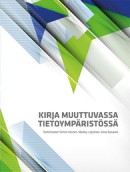 Toim. [Ed. by] Markku Löytönen, Tommi Inkinen, Anne Rutanen
Toim. [Ed. by] Markku Löytönen, Tommi Inkinen, Anne Rutanen
Helsinki: Suomen tietokirjailijat ry. [The Finnish Association of Non-Fiction Writers], 195 p., ill.
ISBN 978-952-67356-3-4
paperback; available also online:
http://www.suomentietokirjailijat.fi/jasenyys/julkaisut/kirja-muuttuvassa-tietoymparisto/
In the Western world the experience of reading is undergoing a critical change. There is even talk of a third information revolution. Books are increasingly acquiring electronic form, and the future of the printed book is being called into question. Kirja muuttuvassa tietoympäristössä contains the considered opinions of 18 experts on what is taking place in the field of non-fiction, and gives an overview of the literature on the current situation, which is seen from the point of view of the bookstore, the library, the author and the publisher. There is a discussion of intellectual property issues, developments in technology, and changes in the use of teaching materials, language, and reading habits. Finland is a leading country in both literacy and reading. The number of books has slowly declined in recent years, but it seems that the country’s youth has maintained an interest in books, and in fiction in particular. Although printed reference works of the encyclopedia type have given way to the information provided by the Internet, it is likely that literature and reading will preserve their status as a part of human culture.
Translated by David McDuff
Juho Kotakallio: Hänen majesteettinsa agentit. Brittitiedustelu Suomessa 1918–1941 [His Majesty’s agents. British Intelligence in Finland 1918–1941]
14 August 2014 | Mini reviews, Reviews
 Hänen majesteettinsa agentit. Brittitiedustelu Suomessa 1918–1941
Hänen majesteettinsa agentit. Brittitiedustelu Suomessa 1918–1941
[His Majesty’s agents. British Intelligence in Finland 1918–1941]
Jyväskylä: Atena, 2014. 297 pp., ill.
ISBN 978-952-300-025-4
€34, hardback
Historian Juho Kotakallio’s book deals with the work of the British Intelligence Service (SIS) in Finland from the Declaration of Independence (1917) to the early phase of the Continuation War (1941–1944). The Bolshevik Soviet state was also seen as a threat to Europe in its western neighbour Finland, which offered a key observation post for the gathering of secret intelligence about the Soviet Union. Undercover British agents took up residence in the country, and were moved to and fro across the eastern border. Russian émigrés and some Finns also worked for the British. One victim of the spy world was Sidney Reilly (considered to be a prototype of James Bond), who was lured through Finland to the Soviet Union, where he met his death by execution. In the 1930s the agents’ interest also increasingly focused on economics and on the growing power of Germany. During Finland’s Winter War with the Soviet Union in 1939–40 British intelligence was based more on openness and trust. After the outbreak of the so-called Continuation War, in December 1941, Britain declared war on Finland, and the possibilities for intelligence gathering there became fewer. The book, which gives a fascinating and objective view of the intelligence world, unfortunately lacks an index of names.
Translated by David McDuff
Sata sosiaalista innovaatiota Suomesta [100 innovations from Finland]
5 June 2014 | Mini reviews, Reviews
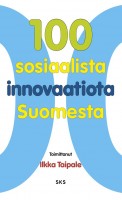 Sata sosiaalista innovaatiota Suomesta
Sata sosiaalista innovaatiota Suomesta
[100 innovations from Finland]
Toim. [Ed. by] Ilkka Taipale
Helsinki: Finnish Literature Society, 2013. [Second, revised edition] 332 pp .
ISBN 978-952-222-466-8
€10, paperback
English edition:
100 Social Innovations from Finland
ISBN 978-952-222-463-7
€10, paperback
In this book edited by the physician and social activist Ilkka Taipale, dozens of experts discuss Finnish social innovations. The book is a revised version of the volume that first appeared in 2006 and has already been translated into 17 languages. Readers may have their own ideas about whether all the innovations originated in Finland – nevertheless, they are distinctively Finnish in their application. They are dealt with in the following groups: administration, social policy, health, culture, international context, civil society, social technology and everyday amusements. A wide range of topics is covered, including the Sámi issue, the unicameral parliament, the maternity package, free education, text messaging and Nordic Walking [walking with the poles for exercise]. Some of the innovations, like the sauna, Nordic Walking, the board game ‘Star of Africa’ and the free computer operating system Linux, are well known outside Finland, while others are only to be found there. The viewpoints presented in the essays vary, but the book provides a thought-provoking overview of Finnish creativity.
Translated by David McDuff
Liisa Suvikumpu: Suomalaiset kylpylät. Kotimaisen kylpyläkulttuurin historiaa [Finnish spas. The history of Finnish spa culture]
28 May 2014 | Mini reviews, Reviews
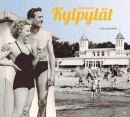 Suomalaiset kylpylät. Kotimaisen kylpyläkulttuurin historiaa
Suomalaiset kylpylät. Kotimaisen kylpyläkulttuurin historiaa
[Finnish spas. The history of Finnish spa culture]
Helsinki: Finnish Literature Society, 2013. 240 pp., ill.
ISBN 978-952-222-239-8
€45, hardback
The Finnish sauna fulfils some of the same functions as the spa, but the latter is more public. In Finland there have been various kinds of spas that employ the health-giving effects of water, and they have mostly been based on European models. The historian Liisa Suvikumpu presents the story of some twenty Finnish spas from a cultural-historical perspective. Their heyday lasted from the nineteenth century to World War II. At these establishments it was possible to enjoy the benefits of bathing and mineral water: they were accompanied by relaxation therapy, rest, exercise and a healthy diet , but also entertainment and socialising. The spas in various parts of Finland were keenly patronised by Russian visitors before the Russian Revolution of 1917. Some of Finland’s most renowned architects designed the buildings, and the premises often included pavilions, kiosks, a restaurant and a park. With its lively text and versatile illustrations this book would make also an excellent present.
Translated by David McDuff
Kynällä kyntäjät. Kansan kirjallistuminen 1800-luvun Suomessa [Ploughers with a pen. The development of literacy in nineteenth-century Finland]
15 May 2014 | Mini reviews, Reviews
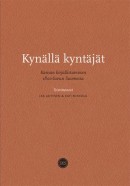 Kynällä kyntäjät. Kansan kirjallistuminen 1800-luvun Suomessa
Kynällä kyntäjät. Kansan kirjallistuminen 1800-luvun Suomessa
[Ploughers with a pen. The development of literacy in nineteenth-century Finland]
Toimittajat [Editors]: Lea Laitinen & Kati Mikkola
Helsinki: Finnish Literature Society, 2013. 558 pp., ill.
ISBN 978-952-222-453-8
€42, paperback
This multidisciplinary work by thirteen researchers discusses the writings of self-taught people in the 19th century. In their own communities these Finnish-language amateur authors were exceptions to the norm, but viewed in the context of the Finnish nation as a whole there were more of them than there were authors belonging to the educated classes. The principal aim is to examine how the common people saw the social and cultural phenomena which the educated classes saw from their own perspective. Kynällä kyntäjät provides a background to the research of the subject and the spread of writing ability, presenting diaries, biographies, letters, rural poetry published in newspapers, broadside ballads, plays, short stories, collections of folklore and handwritten journals, as well as focusing on the mental and linguistic changes related to the development of literacy. The book opens up a new and fascinating perspective on the 19th-century world of ideas.
Translated by David McDuff
Martin Panelius & Risto Santti & Jarkko S. Tuusvuori: Käsikirja [The hand book]
8 May 2014 | Mini reviews, Reviews
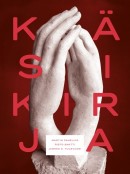 Käsikirja
Käsikirja
[Handbook]
Helsinki: Teos, 2013. 761 pp., ill .
ISBN 978-951-851-523-7
€37, hardback
Human development and human life are in many ways linked to the hand – and yet we seldom think about its significance. In their accessibly written and comprehensive Käsikirja, Emeritus Professors Martin Panelius and Risto Santti are joined by researcher Jarkko S. Tuusvuori in considering the body’s upper extremity from various points of view. The authors’ expertise in their own fields – neurology, anatomy and philosophy – set the book’s tone, but it goes far beyond these. The structure and functions of the hand are examined, as are its phylogeny, its neural networks, its aging process, its use in skills, and the injuries and illnesses that threaten it. The book deals with the hand’s connection with language and communication, its social significance, and the importance of human touch. There are a great many details, terms and names, but the artwork, the beautiful layout, the examples and the literary selections enliven the narrative. A multi-faceted achievement, Käsikirja is a refreshingly original work of non-fiction.
Translated by David McDuff
Juhani Suomi: Mannerheim – viimeinen kortti? Ylipäällikkö-presidentti [Finland plays its last card – Mannerheim, Commander-in-chief and President]
30 April 2014 | Mini reviews, Reviews
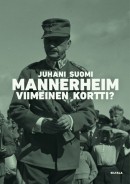 Mannerheim – viimeinen kortti? Ylipäällikkö-presidentti
Mannerheim – viimeinen kortti? Ylipäällikkö-presidentti
[Finland plays its last card – Mannerheim, Commander-in-chief and President]
Helsinki: Siltala, 2013. 836 pp., ill.
ISBN 978-952-234-172-3
€32, hardback
In his book Professor Juhani Suomi – well-known as the biographer of President Urho Kekkonen – focuses on the life and actions of Marshal Gustaf Mannerheim (1867–1951) during the final phase of the Continuation War between Finland and the Soviet Union beginning in1943 and, in particular, during his term as Finnish President from 1944 to 1946. Mannerheim was elected President by exceptional procedure, and his difficult task was to lead Finland from war to peace, which he succeeded in doing. Suomi seeks to reply specifically to the question of whether Mannerheim lived up to the myth that was created about him, and of whether he was Finland’s last chance as the guarantor of the country’s independence during those fateful years, as he is often presented. On the basis of a number of sources, the author draws a critical portrait of an aristocrat: this was a man who was cold and vain, who at every turn thought mainly of his own posthumous reputation and who as an elderly leader was slow and fickle in his decisions – though the reader will not necessarily agree with all of Suomi’s conclusions. Well-written, occasionally a bit too detailed, his book vividly describes a dramatic period in Finland’s recent history.
Translated by David McDuff
